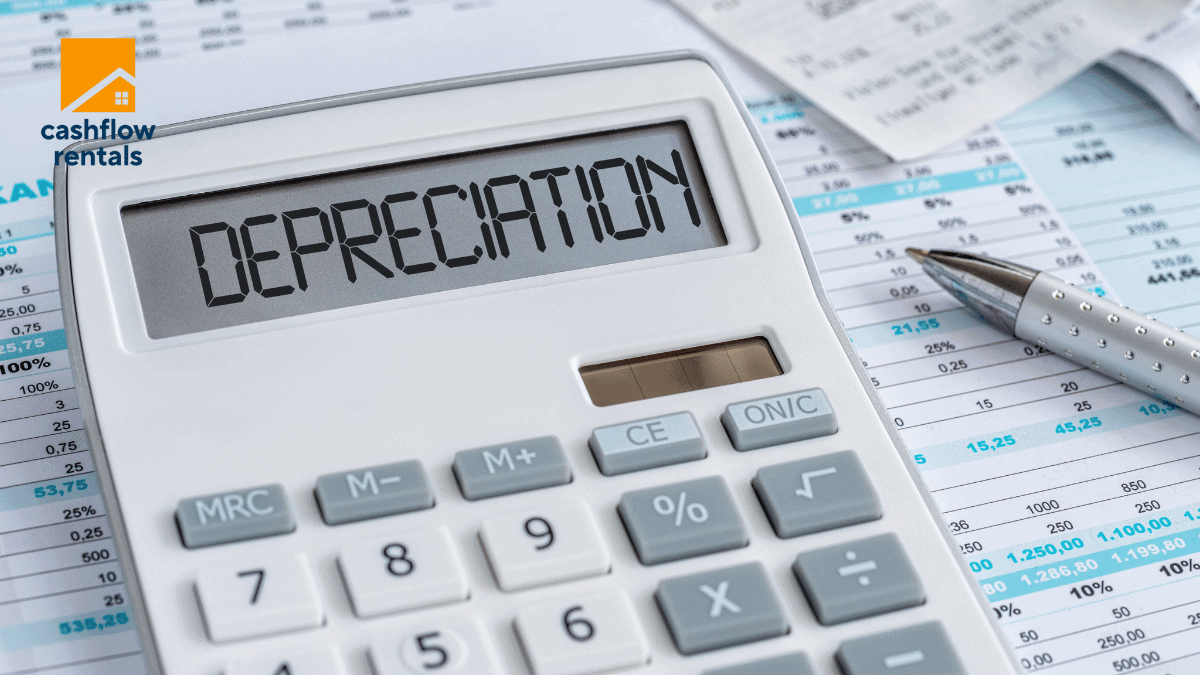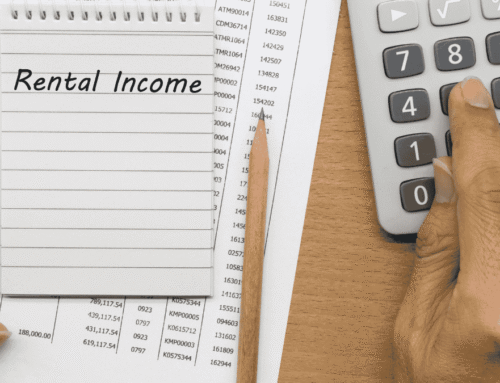Rental Property Depreciation Calculator
The Most Comprehensive Rental Property Depreciation Calculator on the Internet
Depreciation is one of the biggest and best tax deductions you can make as a real estate investor. Use my free rental property depreciation calculator to calculate accurate tax deductions for your rental property in the United States.
Try our other calculators
- Rental Property Calculator: Analyze cash flow, cap rate, CoC return, and long-term ROI for any rental property.
- DSCR Calculator: Quickly check if a rental property’s income qualifies for a DSCR loan.
- DSCR Loan Rates Calculator: Get estimated DSCR loan rates based on your deal and borrower profile.
- DSCR Cash Out Refinance Calculator: Work out your max cash out proceeds from your current rental property.
Rental Property Depreciation Calculator
Property basics
What does “placed in service” mean?
The date you first placed the property in a condition or state of readiness for rental use. We’ll apply the IRS mid-month rule automatically.Cost to depreciate
How to estimate land value
Most U.S. county tax bills list separate assessed values for land and improvements (building). Compute Land % = Assessed Land ÷ (Assessed Land + Assessed Improvements), then apply that % to your purchase price to estimate land dollars.Capital improvements (optional)
Add items you renovated or added after purchase (appliances, flooring, parking pad, etc.). We’ll handle partial first-year amounts automatically.
Tax estimate (optional)
We’ll multiply your depreciation by your tax rate(s) to show an estimated tax savings. This is not tax advice.
Advanced options (optional)
ADS uses 30 years for residential and 40 for commercial. Only use this if your accountant told you to (e.g., certain interest-limitation elections).
JOIN MY VIP PRIORITY INVESTOR LIST
Get Investor-Ready Turnkey Rental Properties and Exclusive DSCR Financing Deals Delivered to Your Inbox Every WeekYES! ADD ME TO THE PRIORITY INVESTOR LIST
Rental Property Depreciation Deduction – Everything You Need to Know
Depreciation is one of the biggest and best tax deductions we get as real estate investors. Using it correctly can, in many cases, take your U.S. taxable income to zero (or close to it). It is a yearly tax deduction that lets landlords recover the cost of a rental building over time. It doesn’t change your cash flow today, but it can reduce the income tax you owe on your rental profits each year.
Key Points
- What’s depreciated: the building and certain improvements (not the land).
- Typical lifespans: Residential rentals use 27.5 years; commercial buildings use 39 years.
- Start date: Depreciation begins when the property is placed in service (ready and available for rent).
- First/last year are partial: The IRS mid‑month rule means you usually get a half‑month in the month you start (and the month you sell).
- Tax savings: Your yearly depreciation reduces taxable rental income; if you enter your tax rate above, the calculator shows the estimated savings.
U.S. Federal Income Tax Brackets (2025)
These are the ordinary income marginal tax brackets for the 2025 tax year (filed in 2026). Brackets apply to taxable income after deductions. Capital gains and qualified dividends have different rates.
| Rate | Single | Married filing jointly | Married filing separately | Head of household |
|---|---|---|---|---|
| 10% | up to $11,925 | up to $23,850 | up to $11,925 | up to $17,000 |
| 12% | $11,926 – $48,475 | $23,851 – $96,950 | $11,926 – $48,475 | $17,001 – $64,850 |
| 22% | $48,476 – $103,350 | $96,951 – $206,700 | $48,476 – $103,350 | $64,851 – $103,350 |
| 24% | $103,351 – $197,300 | $206,701 – $394,600 | $103,351 – $197,300 | $103,351 – $197,300 |
| 32% | $197,301 – $250,525 | $394,601 – $501,050 | $197,301 – $250,525 | $197,301 – $250,500 |
| 35% | $250,526 – $626,350 | $501,051 – $751,600 | $250,526 – $375,800 | $250,501 – $626,350 |
| 37% | $626,351+ | $751,601+ | $375,801+ | $626,351+ |
Tip: to estimate your effective tax rate, remember the U.S. system is graduated. You pay each bracket’s rate only on the portion of income that falls within that bracket.
Foreign Nationals: If you are a foreign national who owns a U.S. rental property (like me) and you elect to have your U.S. rental income taxed as Effectively Connected Income (ECI), you will be taxed at the graduated rates for a single person. See my guide on U.S. Taxes for Foreign Real Estate Investors.
What’s not Depreciated
- Land (the dirt never “wears out”).
- Personal-use portion of a mixed‑use property.
- Routine repairs and maintenance you deduct in the year paid (not capitalized). These costs are simply deducted from your gross rental property income, not depreciated. So you get to deduct the full amount in the year the cost occurred.
How it Works in Practice
- Start with your total purchase price (including capitalized closing costs).
- Estimate the land value (use the simple method from your tax bill’s land/building split – see notes in the calculator above).
- Your depreciable building basis = purchase price − land value.
- Select Residential (27.5 years) or Commercial (39 years) and enter your placed‑in‑service date.
- Our calculator handles the mid‑month rule and builds your yearly schedule automatically.
Heads up on improvements: Big upgrades you make after purchase (like appliances, carpet, fencing, roof) are added as separate items with their own timelines. Add them in the “Capital improvements” section above and we’ll include them in your schedule.
Quick Start — How to Calculate Rental Property Depreciation
Use this 6‑step checklist to calculate an accurate cost basis for your rental property.
Prepare Before You Start
- Your closing disclosure or HUD‑1 (to confirm total purchase price and any capitalized closing costs).
- Your latest property tax bill (for the land vs. building split — or use our helper in the calculator).
- Your placed‑in‑service date (first day the home was ready and available to rent, e.g., 5/10/2025).
Step‑by‑step
- Enter your total purchase price (include capitalized closing costs; title, recording etc.).
- Enter or estimate your land value. Don’t know it? See the methodology and example below.
- We compute your depreciable building basis automatically: purchase price − land value.
- Choose Residential (27.5 years) or Commercial (39 years).
- Anter your placed‑in‑service date (M/D/YYYY).
- (Optional) Add capital improvements like appliances, carpet, fencing, or roof as separate items with their own in‑service dates. We handle the prorated first year and any bonus‑eligible components.
How to Estimate Land Value (quick method)
Use this simple 4‑step method from your tax bill so you can calculate your depreciable building cost basis correctly.
- Find the assessed amounts on your tax bill: Land and Improvements (building).
- Compute the land percentage: Land % = Assessed Land ÷ (Assessed Land + Assessed Improvements).
- Estimate land dollars by multiplying your purchase price by that percentage: Land $ = Purchase price × Land %.
- Get your depreciable building basis: Building basis = Purchase price − Land $.
Example
Tax bill shows Land $50,000 and Improvements $200,000 (Total $250,000). Land % = 50,000 ÷ 250,000 = 20%.
- Purchase price $300,000 → Land $ = 20% × 300,000 = $60,000
- Depreciable building basis = 300,000 − 60,000 = $240,000
Pro Tips
- If your tax bill splits differ a lot from your purchase allocation, ask your tax pro whether another reasonable method is appropriate for your specific situation.
- Repairs you expense in the year paid are not depreciated. Only the building and capital improvements are.
- If you later add items (e.g., new appliances in 2025), add them as separate improvements. They start their own depreciation timeline on the date placed in service.
- Enter your federal (and optional state) tax rate from the table above to see your estimated tax savings from depreciation each year.
How the IRS rules work: GDS vs. ADS, and the mid-month convention
Depreciation for rentals in the U.S. generally uses Straight-line MACRS under either the General Depreciation System (GDS) – which is the standard system) or the Alternative Depreciation System (ADS) which is a longer-life alternative used in special cases. Both use the IRS mid-month convention for buildings, which means the first and last year are partial.
GDS vs. ADS (at a glance)
| Feature | GDS (default) | ADS (longer life) |
|---|---|---|
| Method | Straight-line | Straight-line |
| Residential rental | 27.5 years | 30 years |
| Nonresidential (commercial) | 39 years | 40 years |
| Convention | Mid-month (½ month in the month you start and the month you dispose) | |
| When used | Most U.S. rentals | Required/elected in specific cases (see below) |
The Mid-Month Convention (why year one is smaller)
Buildings use the IRS mid-month convention. If you place a property in service on any day in June, you’re treated as owning it for ½ month of June plus full months for July to December. The same logic applies in the year you sell or retire the property: you only get ½ of the month in the month of disposition.
- Real-world effect: year one is a partial deduction; the next years are steady; the final year is partial again.
- No extra inputs needed here: our calculator applies mid-month automatically based on your placed-in-service (and sale, if entered) dates.
When do you use ADS?
Most landlords will use GDS. You’ll use ADS (the longer life) if:
- You’re required to — common cases include property used predominantly outside the U.S., certain tax-exempt use property, or when mandated by other elections.
- You elect the real property trade or business (RPToB) treatment under interest-limitation rules; that election generally requires ADS for certain real property.
- Your CPA tells you to for a specific compliance or planning reason. (ADS increases recovery period, lowering the annual deduction.)
ProTip: If you’re not sure, you’re probably on GDS. ADS is the exception.
Improvements and Components
You can also depreciation some renovations after purchase. These are added as separate assets with their own depreciable lives and placed-in-service dates. Many common components (e.g., appliances, carpet, land improvements) have shorter lives than the building, and may be bonus-eligible under current law. Structural items (e.g., roof, HVAC) typically follow the building’s life and are not bonus-eligible. Our calculator figures all that out for you.
Foreign property & other special cases
- Property located outside the U.S. generally uses ADS lives (30/40 years) even if you’re a U.S. taxpayer.
- Mixed-use and change-of-use scenarios can alter recovery periods and conventions; keep good records and dates.
- Short tax years and certain entity elections can change how much you can claim in the first/last year.
Next up: we’ll cover improvements, component lives, and bonus depreciation with examples you can copy.
Improvements, Components & Bonus Depreciation
After you purchase a rental property, the money you spend on upgrades is usually treated as capital improvements, not repairs. Improvements are added to your asset list and depreciated over their own recovery periods starting on their placed‑in‑service dates. In contrast, true repairs and maintenance are typically deducted in the year paid and are not depreciated.
What Counts as an Improvement vs. a Repair?
- Improvements: add value, prolong useful life, or adapt the property to a new use (e.g., new roof, HVAC replacement, full kitchen remodel, new flooring, new parking pad/fencing, new appliances).
- Repairs: keep the property in ordinary efficient operating condition (e.g., patching drywall, fixing a leak, servicing HVAC, minor touch‑ups).
Common Class Lives (GDS)
| Component | Typical GDS life | Bonus eligible? | Notes |
|---|---|---|---|
| Appliances | 5 years | Often yes | Ranges, fridges, washers/dryers (separate from the building). |
| Flooring / carpet | 5 years | Often yes | Durable flooring sometimes longer; check your facts and circumstances. |
| Cabinetry | 7 years | Often yes | Standalone fixtures can be components; built‑ins may vary. |
| Land improvements (fencing, paving, landscaping) | 15 years | Often yes | Not the same as the land itself; land is not depreciable. |
| Roof (structural) | 27.5 / 39 years | Generally no | Treated as part of the building structure. |
| HVAC (central systems) | 27.5 / 39 years | Generally no | Typically structural; window units may differ by facts. |
Pro Tip: Lives above are common under GDS; your CPA may adjust based on property type and facts.
Bonus depreciation basics†
Bonus depreciation allows an immediate first‑year deduction for certain qualifying property. Generally, it’s used for items with a recovery period of 20 years or less (e.g., 5‑, 7‑, 15‑year components) and certain qualified improvement property. Buildings/structural components themselves are not bonus‑eligible.
- Bonus only applies to the improvement’s basis, not the building’s basis.
- If an item is not bonus‑eligible, it’s still depreciated over its normal life with the appropriate convention.
- Your election strategy (bonus vs. no bonus) can affect current‑year tax and future recapture—coordinate with your CPA.
Section 179 vs. Bonus (quick contrast)
- Section 179 is a separate expensing election with limits and phase‑outs; property used to furnish lodging is generally not eligible.
- Bonus depreciation can apply to many rental components (5/7/15‑year) without the same business‑income limitations.
- Commercial tenants and non‑lodging businesses may have broader Section 179 options than residential landlords.
Example: Adding an Improvement Mid‑Year
You place the rental in service on 5/1/2025. In September you install new appliances for $4,200 and put them in service on 9/10/2025.
- The appliances are treated as a separate 5‑year asset starting on 9/10/2025.
- If bonus depreciation applies, and you elect it, you may deduct a large portion in year one; otherwise you’ll depreciate them over 5 years with the applicable convention.
- Either way, the building’s depreciation continues on its own schedule.
Bottom line: Track each improvement with its own cost and placed‑in‑service date. Our calculator lets you add components so your schedule reflects both the building and each improvement correctly.
†
2025 update on 100% bonus depreciation:
A federal tax law enacted in 2025 restores 100% bonus depreciation for qualified property (generally assets with a MACRS recovery period of 20 years or less and certain qualified improvement property). The 100% rate applies to property acquired and placed in service on or after 1/20/2025. For items placed in service between 1/1/2025–1/19/2025, the prior 40% rate generally applies (with an election available in some cases to use 40% for the first tax year ending after 1/19/2025). Buildings/structural components are still not bonus-eligible. Source: KBKG
Selling a Rental Property: Depreciation Recapture, Capital Gains & 1031 Exchanges
When you sell or exchange a rental property, part of your gain may be taxed as depreciation recapture (called unrecaptured §1250 gain, taxed at up to 25% federally). Any remaining gain is usually long-term capital gain if you held the property more than a year. State taxes and the 3.8% NIIT may also apply depending on your income and situation.
What is Depreciation Recapture?
Over the years you claim (or could have claimed) depreciation on the building. When you sell, the IRS “recaptures” that benefit first: the portion of gain equal to your accumulated depreciation (the amount allowed or allowable) is taxed as unrecaptured §1250 gain at a maximum federal rate of 25%.
How to Estimate at Sale (quick steps)
- Compute adjusted basis: (original depreciable basis + capital improvements − accumulated depreciation).
- Compute amount realized: (contract price − selling costs such as commissions, transfer taxes, title, etc.).
- Total gain = amount realized − adjusted basis.
- Recapture portion = the lesser of (a) accumulated depreciation or (b) total gain; taxed up to 25%.
- Remainder of the gain is generally long-term capital gain if held > 1 year.
Quick Example
You bought a rental for $300,000; land is $60,000, so your initial building basis is $240,000. By the time you sell, you’ve taken $52,364 of depreciation. You sell for $400,000 and pay $24,000 in selling costs.
- Amount realized = 400,000 − 24,000 = $376,000
- Adjusted basis = 240,000 − 52,364 = $187,636
- Total gain = 376,000 − 187,636 = $188,364
- Recapture portion = min(52,364, 188,364) = $52,364 (taxed up to 25%)
- Remaining LTCG = 188,364 − 52,364 = $136,000
Note: State rules vary, and high-income taxpayers may owe the NIIT.
1031 Exchanges (like-kind) — Defer, Don’t Erase
A properly structured 1031 exchange can defer both capital gains and depreciation recapture. You must use a qualified intermediary, identify replacement property within 45 days, and close within 180 days. Your gain and recapture are carried into the new property via a basis carryover; tax is deferred until a taxable sale.
Forgot to Depreciate in Prior Years?
The IRS treats depreciation as allowed or allowable, so recapture can still apply even if you didn’t claim it. Many landlords correct this with a change in accounting method (often using Form 3115) to “catch up” missed depreciation; talk with your tax pro.
Records to keep
- Settlement statements (purchase & sale), closing costs, and selling expenses
- Land vs. building allocation used to set your original cost basis
- Depreciation schedules and capital improvements with dates and amounts
- Exchange documents if doing a 1031 (QI agreement, IDs, closing files)
Bottom line: Plan ahead for recapture when modeling a sale, and consider a 1031 exchange if deferral fits your goals. Our calculator exports a CSV schedule you can share with your tax professional.
Foreign Rental Property & Special Cases
Depreciation rules can change in a few situations, especially for rental properties located outside the United States, mixed-use properties, or when your tax year is short or changes midstream. Use these notes to avoid common mistakes.
Property located outside the U.S.
- Residential rentals outside the U.S. generally use ADS with a recovery period of 30 years (instead of 27.5).
- Nonresidential (commercial) property outside the U.S. uses ADS with 40 years.
- The mid-month convention still applies to buildings; first and last years are partial.
Non-U.S. owners with U.S. rental property
If you’re a non-U.S. person with U.S. rental income, you can elect to treat rents as Effectively Connected Income (ECI). That lets you claim depreciation and deduct expenses against that income, with tax at graduated rates. (Without the election, 30% withholding on gross rents may apply.) Talk to a qualified advisor about filings and elections. See my guide: U.S. Taxes on Real Estate Income for Non-Residents
Mixed-use properties (personal + rental)
- Allocate basis between the rental and personal portions based on a reasonable method (e.g., square footage or rooms).
- Only the rental portion’s building basis is depreciable.
- Track days of personal use carefully—this can affect deductibility of expenses.
Short tax years & entity changes
- A short tax year (e.g., new entity, liquidation, or accounting period change) alters first/last-year amounts. Buildings still follow the mid-month convention, but the months in the year are fewer.
- If you change the reporting entity (e.g., contribute property to an LLC taxed as a partnership), keep schedules and placed-in-service dates intact—basis and accumulated depreciation must carry correctly.
Change of use & conversions
- Converting a former primary home to a rental? The depreciable basis is generally the lower of (a) adjusted basis or (b) fair market value on the date placed in service.
- Switching from rental to personal use pauses depreciation going forward; keep year-by-year records for potential future sale/recapture.
Casualties, improvements & partial disposals
- Major replacements (roof, HVAC) are generally capital improvements with their own lives (or part of the building if structural).
- If a component is retired or abandoned, you may have a partial disposition—coordinate with your CPA to remove the old component from basis and accumulated depreciation.
- Casualty losses follow separate rules; document repair vs. replacement and dates placed in service for any new assets.
Passive loss & at-risk reminders
- Depreciation reduces rental income, but overall losses can be limited by the passive activity and at-risk rules.
- Disallowed losses are typically suspended and may be used later (e.g., when you have passive income or dispose of the activity).
Bottom line: Know when ADS applies, allocate mixed-use basis carefully, and keep tight records of
dates and costs for improvements and dispositions. These details drive accurate schedules and correct taxes at sale.
Worked Examples you can Copy
Here are simple examples that mirror the calculator above. Numbers are rounded for readability.
Example 1 — Residential Rental Property (27.5 years)
Purchase price $300,000; land allocation $60,000 ⇒ depreciable building basis $240,000. Placed in service on 6/15/2025.
- Annual straight‑line amount = $240,000 ÷ 27.5 ≈ $8,727.
- Year‑1 (mid‑month for June → ~6.5 months) ≈ $4,727.
- Years 2–27 full years ≈ $8,727 per year, with a small partial in the final year.
Example 2 — Adding an Improvement Mid‑Year
Same property as above. On 9/10/2025 you install new appliances for $4,200.
- Appliances are a separate 5‑year asset starting when placed in service.
- If you claim bonus depreciation and the item qualifies, you can deduct up to 100% of the $4,200 in 2025 (see the footnote in Section 4 for the 2025 rule update).
- If you don’t take bonus or it doesn’t qualify, you’ll depreciate the $4,200 over its normal life using the applicable convention. Your building’s depreciation continues unchanged.
Example 3 — Commercial Property (39 Years)
Purchase price $1,300,000; land allocation $300,000 ⇒ depreciable building basis $1,000,000. Placed in service on 2/1/2025.
- Annual straight‑line amount = $1,000,000 ÷ 39 ≈ $25,641.
- Year‑1 (mid‑month for February → ~11.5 months) ≈ $24,573.
Example Tips
- Use the calculator’s CSV export to save a schedule for your records or your CPA.
- Track each improvement with its own cost and placed‑in‑service date; add them as separate items above.
- When you sell, keep your accumulated depreciation handy for recapture calculations (see the sale/recapture section).
FAQs — Rental Property Depreciation
Is depreciation on a rental property tax‑deductible?
Yes. Depreciation on the building and qualifying improvements is generally a deductible expense that reduces your taxable rental income each year. Land is not depreciable.
How do I figure out the land value so I can calculate depreciation?
Use your property tax bill’s split: Land ÷ (Land + Improvements) = land %. Apply that % to your purchase price to estimate the land value. The building basis is purchase price minus land value.
What life and method do I use?
Most residential rentals use 27.5 years straight‑line under GDS; most commercial buildings use 39 years. Buildings follow the mid‑month convention, so the first and last year are partial.
When does depreciation start?
It starts when the property is placed in service—the date it’s ready and available to rent. You don’t need an actual tenant on that date.
How does the first year work if I start mid‑year?
With the mid‑month convention, you get a half‑month in your start month and full months thereafter. The calculator handles this automatically from your placed‑in‑service date.
When do I have to use ADS instead of GDS?
Common ADS triggers include property outside the U.S., certain elections (e.g., real property trade or business under interest‑limitation rules), and specific compliance situations. ADS uses 30 years for residential and 40 years for nonresidential property.
Do improvements get depreciated separately?
Yes. Significant upgrades (appliances, carpet, fencing, roof, etc.) are added as separate assets with their own lives and placed‑in‑service dates. Many 5/7/15‑year items may be bonus‑eligible under current law.
What’s the difference between Section 179 and bonus depreciation?
Section 179 is a separate election with limits and phase‑outs; property used to furnish lodging is generally not eligible. Bonus depreciation can apply to many rental components (5/7/15‑year) without the same business‑income limits. Buildings/structural components are not bonus‑eligible.
I’m a non‑U.S. person with U.S. rental income—can I deduct depreciation?
Often yes, if you elect to treat your rental income as Effectively Connected Income (ECI). That lets you claim depreciation and expenses against that income and be taxed at graduated rates. Talk to a qualified advisor about filings and elections.
What is depreciation recapture when I sell?
On sale, the portion of your gain up to your accumulated depreciation (allowed or allowable) is generally taxed as unrecaptured §1250 gain at a maximum federal rate of 25%. Any remaining gain is usually long‑term capital gain if held > 1 year.
Can a 1031 exchange avoid depreciation recapture?
A properly structured 1031 exchange can defer both capital gains and depreciation recapture into the replacement property through a basis carryover. It doesn’t erase tax; it postpones it.
I forgot to claim depreciation—am I stuck?
The IRS treats depreciation as allowed or allowable, so recapture can still apply even if you didn’t claim it. Many landlords catch up using a change in accounting method (often Form 3115)—ask your tax pro.
Can I depreciate part of a mixed‑use home?
Yes. Allocate basis between the rental and personal portions using a reasonable method (e.g., square footage). Only the rental portion’s building basis is depreciated.
Where do I report depreciation on my return?
Landlords typically track assets on Form 4562 and report income/expense on Schedule E. Your software or CPA will generate the right forms based on your entries.
Are routine repairs depreciated?
No. Routine repairs and maintenance are usually deducted in the year paid; they are not capitalized or depreciated. Improvements are capitalized and depreciated.
Is bonus depreciation 100% right now?
Current law provides 100% bonus depreciation for many qualified 20‑years‑or‑less components placed in service on or after 1/20/2025, with a 40% rate generally applying to items placed in service between 1/1/2025–1/19/2025. Buildings/structural components are not bonus‑eligible. See the footnote in Section 4 for details.
Checklists & Tables (quick reference)
What goes into basis (include) vs. what not to include
| Include in building basis | Do not include in building basis |
|---|---|
|
|
When you Might Need ADS (longer life)
- Property located outside the U.S.
- Real property trade or business (RPToB) election under interest‑limitation rules
- Certain tax‑exempt use or compliance situations per your CPA
Records to Keep
- Closing statements (purchase & sale) and allocation of land vs. building
- Invoices for capital improvements with placed‑in‑service dates
- Year‑by‑year depreciation schedules and accumulated depreciation
- Lease history, days available, and any personal‑use days (for mixed‑use)
- 1031 exchange documents (if applicable)
Disposition (sale/1031) Checklist
- Calculate adjusted basis (original basis + improvements − accumulated depreciation)
- Compute amount realized (contract price − selling costs)
- Separate recapture (up to 25%) and remaining long‑term capital gain
- If doing a 1031 exchange, engage a qualified intermediary, identify within 45 days, close within 180 days
Where things typically show up on the tax return
| Item | Typical form/schedule | Notes |
|---|---|---|
| Building depreciation | Form 4562 (asset listing), flows to Schedule E | Straight‑line; mid‑month convention |
| Improvements/components | Form 4562 (each item), flows to Schedule E | 5/7/15‑year items may be bonus‑eligible |
| Repairs & maintenance | Schedule E | Deducted in the year paid (not depreciated) |
| Sale/recapture | Form 4797 and Schedule D | Unrecaptured §1250 up to 25%; remainder usually LTCG |
| 1031 exchange | Form 8824 | Carryover basis; defers gain and recapture |
Class‑Life Cheat Sheet (condensed)
| Asset | Typical GDS life | Bonus eligible? |
|---|---|---|
| Building (residential) | 27.5 years | No |
| Building (commercial) | 39 years | No |
| Appliances | 5 years | Often yes |
| Flooring / carpet | 5 years | Often yes |
| Cabinetry | 7 years | Often yes |
| Land improvements (fencing, paving) | 15 years | Often yes |
| Roof / HVAC (structural) | 27.5 / 39 years | Generally no |
Tip: When in doubt, add improvements as separate line items in the calculator so your schedule stays accurate—and export the CSV for your records.












